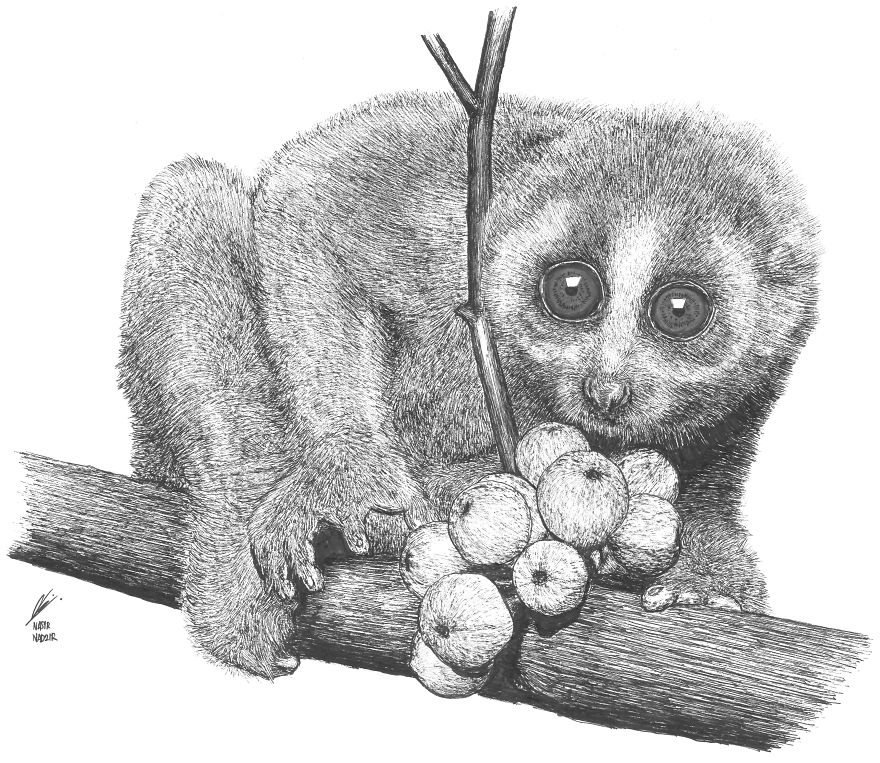Slow Loris
581views
Slow lorises [Kera Duku in Malay] (genus Nycticebus) are primates that belong to the suborder Strepsirrhini. They are found throughout South and Southeast Asia and the surrounding islands, and live in the upper canopy of tropical rainforests.
They are nocturnal, sleeping during the day curled up in the fork of a tree. Slow lorises are slow and deliberate climbers and rarely come to the ground. They have a round face, woolly fur, a dark stripe down their back, and a tail that is reduced to a stump. Their head and body length ranges from 18 to 38 cm (7.1 to 15.0 in). Their hands and feet are strong and good at grasping for long periods of time. Slow lorises are either solitary or live in pairs; the males are territorial and mark their territories with urine. Their diet consists of mollusks, small vertebrates, and fruit.
Each of the slow loris species that had been identified prior to 2012 are currently listed as either “Vulnerable” or “Endangered” by the International Union for Conservation of Nature (IUCN) on their Red List.
The two greatest threats to slow lorises are deforestation and the wildlife trade. Slow lorises have lost a significant amount of habitat, with habitat fragmentation isolating small populations and obstructing biological dispersal. However, despite the lost habitat, their decline is most closely associated with unsustainable trade, either as exotic pets or for traditional medicine.
Slow lorises [Kera Duku in Malay] (genus Nycticebus) are primates that belong to the suborder Strepsirrhini. They are found throughout South and Southeast Asia and the surrounding islands, and live in the upper canopy of tropical rainforests.
They are nocturnal, sleeping during the day curled up in the fork of a tree. Slow lorises are slow and deliberate climbers and rarely come to the ground. They have a round face, woolly fur, a dark stripe down their back, and a tail that is reduced to a stump. Their head and body length ranges from 18 to 38 cm (7.1 to 15.0 in). Their hands and feet are strong and good at grasping for long periods of time. Slow lorises are either solitary or live in pairs; the males are territorial and mark their territories with urine. Their diet consists of mollusks, small vertebrates, and fruit.
Each of the slow loris species that had been identified prior to 2012 are currently listed as either “Vulnerable” or “Endangered” by the International Union for Conservation of Nature (IUCN) on their Red List.
The two greatest threats to slow lorises are deforestation and the wildlife trade. Slow lorises have lost a significant amount of habitat, with habitat fragmentation isolating small populations and obstructing biological dispersal. However, despite the lost habitat, their decline is most closely associated with unsustainable trade, either as exotic pets or for traditional medicine.
581views
Share on Facebook



30
0